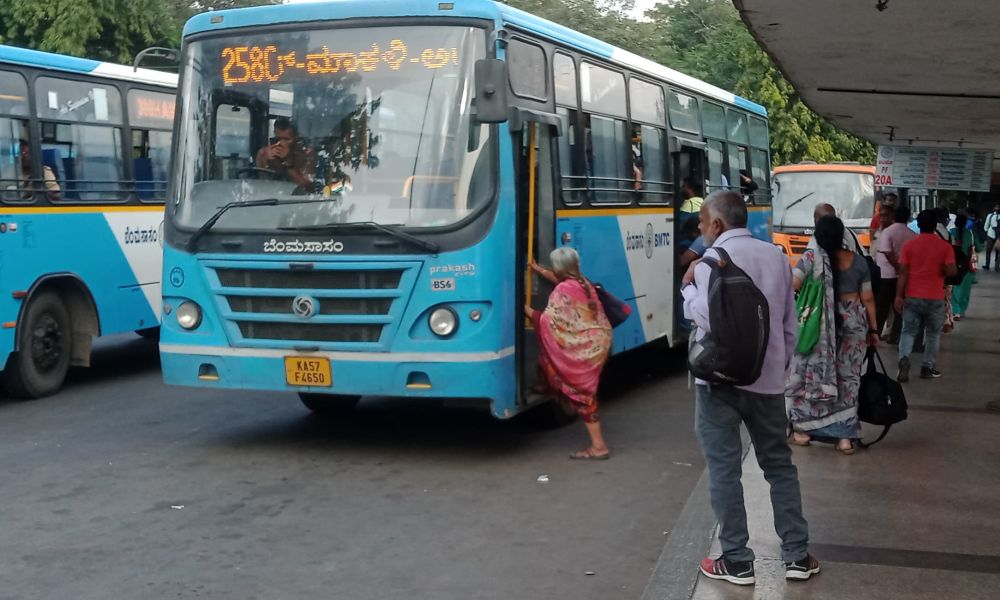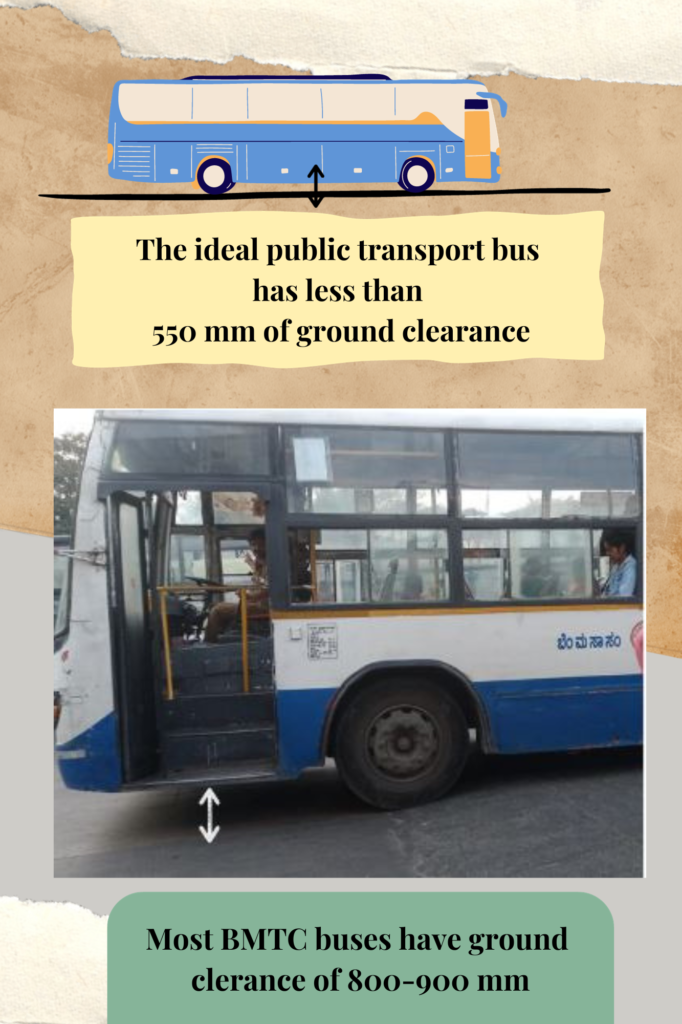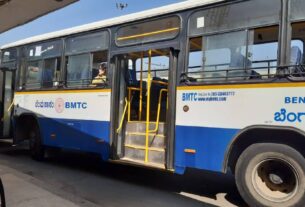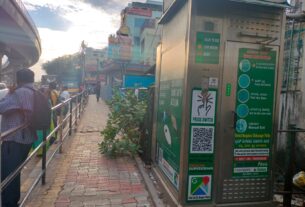Most Bengaluru Metropolitan Transport Corporation (BMTC) buses remain inaccessible to the disabled and elderly due to their high ground clearance and overcrowding.
Although the BMTC has introduced low-floor, ramp-accessible buses meant for the disabled and elderly friendly, most buses have footboards that are too high off the ground, making boarding them difficult for the differently- abled and the elderly. BMTC officials say they currently have no plans to replace the old buses with new low-floor ones.
Ramaprasad, a senior citizen residing in Banashankari and BMTC commuter said that he often struggles while boarding and alighting the buses as the height of the bus steps are steep. “I have a slight limp in my left leg which makes it difficult for me to climb the steps.” He recalled how he had once been lucky to avert an accident when the bus drove off with him while he was trying to board it, one foot still on the ground.
Punarvi, another elderly BMTC commuter said, “I can only board the buses really slowly, carefully holding on to the hand railings, to avoid slipping and falling. I wish all buses had low floors to make boarding them easier for people like us.” She also said that when the buses are crowded, she does not get a seat. “Seldom has anyone offered me their seat, even if they were sitting in the seats reserved for senior citizens.”

Prasanth, a 62-year-old man who commutes everyday from Shanthinagar to Mysore Bank bus stop said that on days that he is not in a hurry, he waits for the newer, low-floor buses. “But these buses are not plenty or frequent. I wish the BMTC does something about it,” he added.
Veedhi, a partially disabled woman who uses a wheelchair said that she cannot commute by BMTC buses as there are steps in most of them. She said, “I use the metro instead, as it is more disabled friendly. But the BMTC must make efforts to make its buses feasible to people like us as it is a comparatively cheaper transport and has better coverage than the metro as well.”
She further said that only the new buses have space allocated for disabled passengers in wheelchairs. But it is not possible for them to board such buses when they are crowded, “as the space reserved for wheelchairs and the disabled are occupied by the crowd of other passengers,” she said.
Sunitha, Public Relations Officer (PRO) at the BMTC central office said that the BMTC currently operates around 850 low floor Volvo 8400 LEs which are easily accessible to the elderly. She further said that a few e-buses have ramp accessibility facility for the convenience of the disabled. “The BMTC has plans to replace all buses with e-buses in the long run following phase-II of the FAME (Faster Adoption and Manufacturing of Hybrid and Electric Vehicles) scheme. The number of low-floor and ramp accessible buses will also be increased.” she added.
In the capital city, the Delhi Transport Corporation (DTC), the largest public sector transport corporation in the National Capital Region (NCR) runs 3,620 low-floor buses.
According to the Automotive Industry Standards Code for Practice for Bus Body Design and Approval (AIS-052), the maximum ground clearance for Indian bus bodies must be limited to 550 mm above road level. Sunitha said that the ordinary BMTC buses have a height between 800-900 mm to account for bad road conditions.

Prof. M.N. Sreehari, advisor to the Government of Karnataka for traffic, transportation and infrastructure said, “All high chassis buses must be replaced with low floor ones so that the elderly can access them. The BMTC should also ensure ramp facilities in the buses for the physically disabled.” He added that many buses operating in the city have only two entrance steps, and are therefore steep, making it difficult for the elderly to climb. He also said that in order to make the city’s public transport more comprehensive and inclusive, passengers must be more considerate of the elderly and the differently-abled. “In the end, it is the mindset of the public that matters,” he added.




